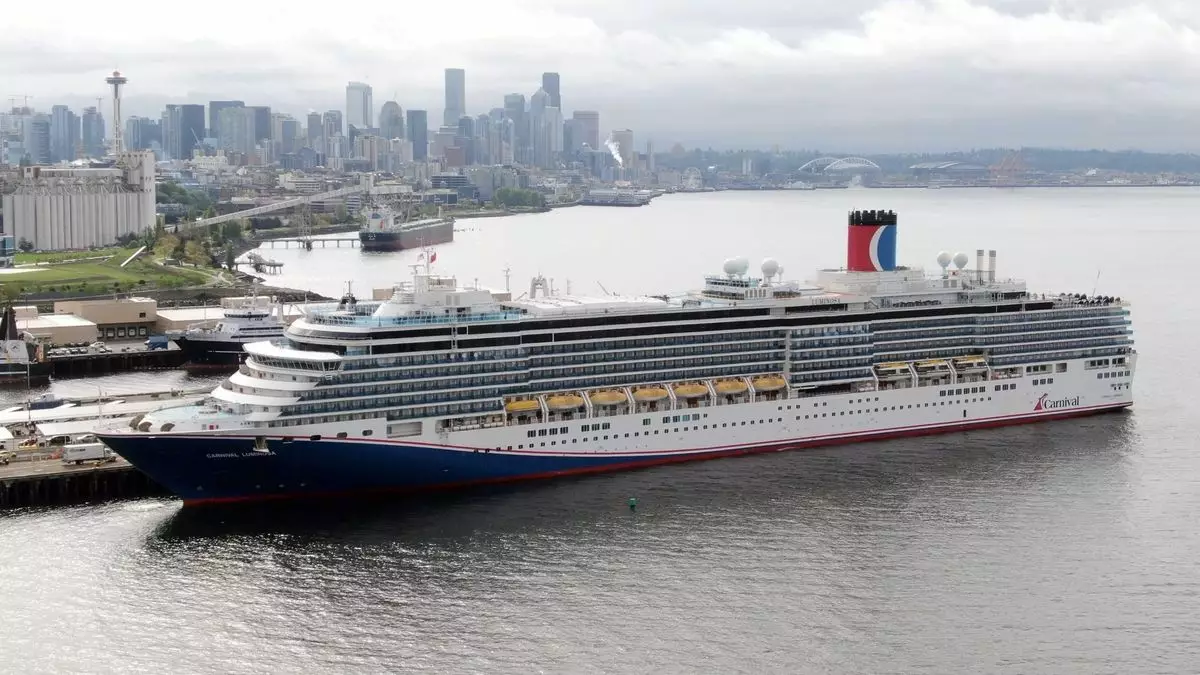Carnival Corporation, the titan of the cruise industry, has managed to carve a remarkable pathway through tumultuous macroeconomic and geopolitical landscapes. While uncertainty looms globally, CEO Josh Weinstein confidently asserted that the cruise liner’s business continues to thrive. With an impressive revenue of $5.8 billion in the first quarter, Carnival has not only surpassed last year’s figures by a staggering $400 million but has also set a high benchmark for operational excellence. This robust performance signals more than just recovery; it showcases Carnival’s adeptness at engaging customers and optimizing experiences on their ships.
Onboard Spending: A Beacon of Consumer Confidence
One of the standout elements of Carnival’s recent success lies in onboard spending, which Weinstein described as “tremendous.” Despite external pressures that often crimp consumer spending, Carnival has experienced a marked increase in the revenue generated from onboard services and products. The 10% year-over-year growth in this segment highlights an intrinsic consumer confidence that is not only thawed from pandemic-induced freezes but thriving in the face of economic unpredictability. A look at business dynamics reveals that passengers are willing to invest significantly in onboard experiences, from dining to entertainment, a trend that speaks volumes about evolving consumer preferences.
Booking Trends: A Solid Foundation for Future Growth
Weinstein emphasized the successful Wave season, a crucial time when cruise bookings typically surge. Carnival’s ability to achieve an occupancy rate of 103% is indicative of both strategic marketing and the allure of cruise travel. The company’s achievement of historic bookings for 2025—an incredible 80% inventory reserved—indicates that the appetite for cruise vacations persists unabated. Such figures imbue confidence in Carnival’s capacity to continue drawing in vacationers long into the future.
Strategic Financial Management and Debt Reduction
Despite looming challenges, Carnival demonstrated acute financial management. The company successfully refinanced $5.5 billion in debt, yielding substantial interest savings of $145 million annually. This strategic move, along with a proactive reduction of $500 million from its debt balance, indicates a shift toward fiscal resilience. While a net loss of $78 million was reported, primarily due to modifications in debt processes, the overall operating income nearly doubled to $543 million, painting a nuanced picture of financial health amid transitions.
Market Outlook: Future Challenges and Optimism
While analysts like Patrick Scholes from Truist Securities have raised eyebrows concerning the current booking pace compared to recent months, the underlying pricing strategies remain robust. Weinstein’s confidence appears well-founded; he notes no significant indicators of impending trouble are arising within the company or consumer behavior. This staunch optimism suggests that, even amidst scrutiny, Carnival is equipped with a nimble leadership team that possesses the skills necessary to adapt in real-time to changing market dynamics.
Carnival Corporation’s current performance exemplifies resilience, responsiveness, and strategic foresight. As it prepares to weather the storms of uncertainty, the company’s relative strength could redefine its impact on the cruise industry and customer experiences moving forward.


Leave a Reply